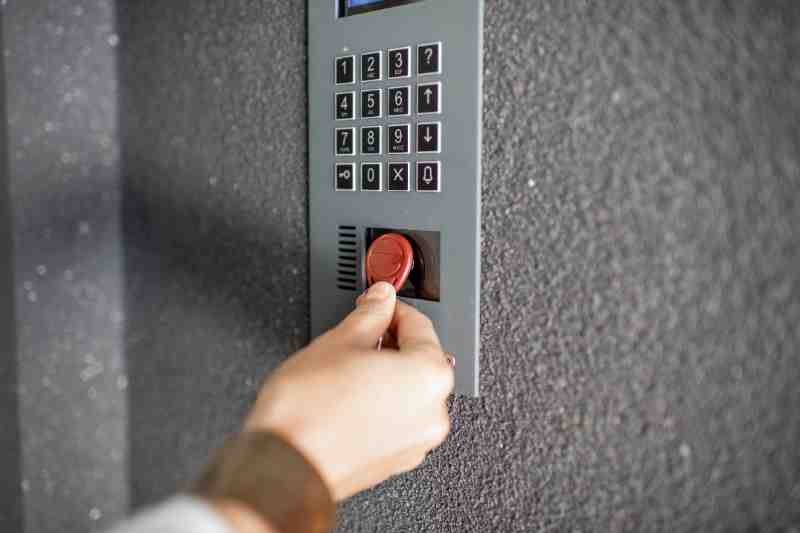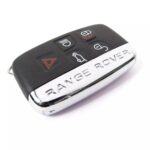Key fobs offer a convenient way to access buildings and properties, replacing traditional keys with a simple tap. But with this convenience comes a question of security: Can You Duplicate A Key Fob? The ease with which key fobs can be copied raises concerns about unauthorized access and the overall security of properties relying on this technology.
This article delves into the world of key fob duplication, explaining how easily it can be done, the potential security risks involved, and explores modern, more secure alternatives like smartphone-based access control systems.
Disclaimer: It’s important to note that ButterflyMX Access Control fobs and key cards are encrypted and designed to resist traditional cloning methods. ButterflyMX does not endorse the use of unauthorized RFID copiers or duplicators.
The Simplicity of Key Fob Duplication
Copying a key fob isn’t a complex process, and readily available technology makes it surprisingly easy. Here’s a breakdown of the steps involved in key fob duplication:
- Acquire an RFID Copier: RFID copiers are handheld devices designed for reading and writing RFID data. These devices are readily available for purchase online, making the tools for key fob duplication easily accessible.
- Read the Original Key Fob: To begin the duplication, you need to read the data from the original key fob. This involves holding the fob close to the RFID copier and pressing the “Read” button. The copier then scans and captures the RFID frequency and data stored on the fob.
- Prepare a Blank Key Fob: Once the original fob’s data is read, you’ll need a blank RFID tag or key fob to write the copied data onto. These blank fobs are also widely available and inexpensive to purchase online.
- Write Data to the Blank Fob: With the blank fob ready, place it near the RFID copier and press the “Write” button. The copier transfers the data it read from the original fob onto the blank one. A beep or flash usually indicates a successful transfer.
- Test the Duplicated Fob: The final step is to test the newly duplicated key fob at the intended access point. If the duplication was successful, the new fob will function identically to the original, granting access.
This straightforward, step-by-step process highlights just how easily a key fob can be duplicated, raising significant security concerns.
Security Risks of Key Fob Cloning
The ease of key fob duplication presents several security vulnerabilities:
- Unauthorized Access: Duplicated key fobs can easily fall into the wrong hands, granting unauthorized individuals access to secure areas. This can compromise the safety and security of residents, tenants, and property.
- Lack of Audit Trails: Traditional key fob systems often lack detailed audit trails for each fob. If a duplicated fob is used for unauthorized entry, it can be difficult to track and identify the source of the security breach.
- Potential for Widespread Copying: If the process of duplication is widely known and accessible, it can lead to a proliferation of unauthorized key fobs, significantly weakening the security of the access control system.
Can You Copy a Key Fob to Your Phone? Exploring Mobile Access Options
While you cannot directly copy the data of a traditional key fob onto your phone due to hardware limitations, there are alternative ways to use your smartphone for keyless entry.
One workaround involves using RFID stickers. These stickers can be programmed with key fob data and attached to your phone, essentially turning your phone into a makeshift key fob. However, this method still relies on the easily cloned RFID technology.
A more secure and advanced solution is adopting a mobile access control system. These systems move beyond the vulnerabilities of traditional key fobs by utilizing smartphone-based credentials.
Mobile Access Control: A More Secure and Convenient Alternative
Mobile access control systems offer a significant upgrade in security and convenience compared to traditional key fob systems. Solutions like ButterflyMX leverage the power of smartphones to provide a more robust and user-friendly access experience.
Here are key benefits of mobile access control:
- Enhanced Security: Mobile access control systems often use encrypted credentials and secure communication protocols, making them significantly harder to clone or duplicate compared to traditional RFID key fobs.
- Smartphone Convenience: Tenants can use their smartphones, devices they already carry, as their access credentials, eliminating the need to carry an additional key fob or card.
- Remote Management: Property managers can remotely manage access permissions, grant or revoke access instantly, and maintain detailed audit logs of entry events.
- Visitor Management: Mobile access systems simplify visitor access with features like virtual visitor passes, eliminating the need for physical key fob distribution.
- Integration and Features: Modern systems offer a range of features that enhance security and convenience, such as video intercom, delivery passes, and integration with smart locks.
ButterflyMX, for example, offers a comprehensive mobile access control system with features like:
- Video Intercom: Enables secure two-way video communication between tenants and visitors, enhancing security and visitor management.
- Delivery Passes: Streamlines package deliveries by providing secure, time-limited access for couriers.
- Visitor Passes: Allows tenants to easily issue and manage digital visitor passes for guests.
- Audit Logs: Provides detailed records of all entry events with time-stamped photos, enhancing security monitoring and accountability.
- Keypads: Offers keypad entry as an alternative credential method, useful for amenity spaces or areas requiring PIN code access.
- Smart Lock Integrations: Integrates with a wide range of smart locks, allowing tenants to control access points throughout the property from their smartphones.
- Multiple Credential Options: Supports various credential types, including mobile access, key cards, fobs, and PIN codes, providing flexibility and redundancy.
Key Fob Duplication FAQs
Is copying fobs illegal?
Copying a key fob is not inherently illegal if you own the original fob. However, duplicating fobs without authorization, especially for malicious purposes, can lead to legal repercussions and serious security breaches.
How much does it cost to copy a fob key?
The cost to duplicate a key fob can vary widely, ranging from $150 to $500 depending on factors like the fob type (encrypted vs. basic), service provider (specialized locksmith or DIY), and location.
Can a locksmith duplicate a key fob?
While not all locksmiths are equipped for key fob duplication, many modern locksmiths now offer these services using RFID copiers. However, their ability to duplicate encrypted fobs may be limited.
Are key fobs programmed?
Yes, key fobs are programmed with unique identification codes during manufacturing, which is how they are authorized to access specific entry points.
What is the difference between an RFID and NFC key fob?
RFID (Radio-Frequency Identification) key fobs typically use one-way communication, while NFC (Near-Field Communication) key fobs offer two-way communication and can store more data, making them more complex.
Conclusion: Moving Beyond Key Fob Vulnerabilities
While key fobs offer a level of convenience, their susceptibility to duplication presents a significant security risk. Understanding can you duplicate a key fob is crucial for property owners and managers seeking robust access control solutions. Mobile access control systems offer a more secure, manageable, and feature-rich alternative, mitigating the risks associated with key fob cloning and providing a modern approach to property access management.

